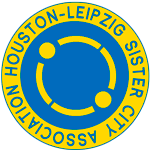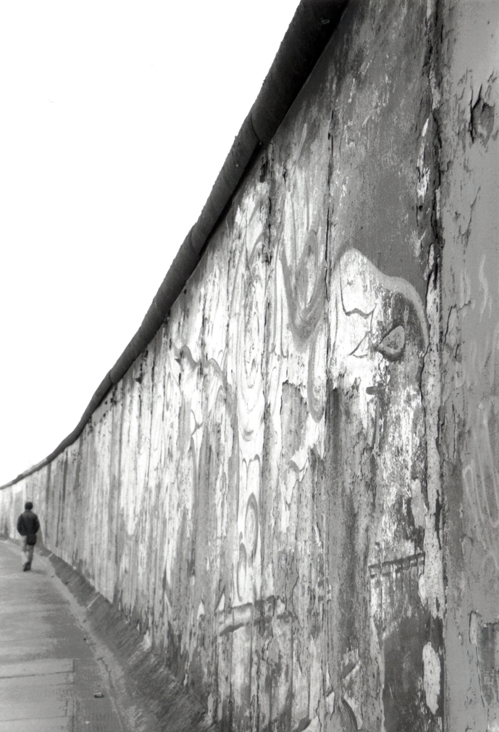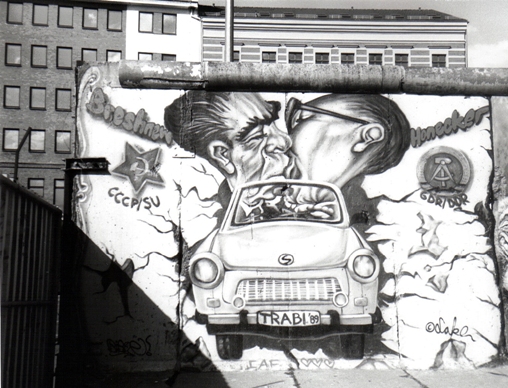Posted 9th of August by Fanny in blog.leipzig-zeitgeist.de.
Sunday, 13th August 1961, shortly after midnight. East German police disrupt the city train and underground connections. Street surfaces are ripped up, barbed wire barriers erected. The Soviet sector border in Berlin is sealed off from the western districts. Only a few days later, units of labour battalions begin to replace the barbed wire by hollow blocks and concrete walls.
The construction of the Berlin Wall cemented the political division of Germany (and Europe). Henceforth, the East German people were utterly and completely at the communist dictatorship’s mercy.
In the spring of 1961, the economic situation in the German Democratic Republic (GDR) began to rapidly worsen. Poor living conditions and increasing supply problems, as well as the ongoing process of forced agricultural collectivization, led to mass exodus. Hundreds of people fled the country every day. The GDR was, quite literally, bleeding to death. Walter Ulbricht, party leader of the Socialist Unity Party of Germany (Sozialistische Einheitspartei Deutschlands or SED) pressed for drastic measures and urged Nikita Khrushchev, Soviet Communist Party leader, to approve decisive plans.
The order and action planning were drawn up in utmost secrecy. Ulbricht signed the most important orders himself. The head of operations was Erich Honecker, Secretary of the National Council of Defence. Another leading role was taken on by Erich Mielke, head of the GDR secret service (Staatssicherheit or the, colloquially termed, Stasi). The Ministry for State Security (MfS) being the “Shield and Sword of the Party” not only secured the implementation of the order but also observed people’s reactions and opinions. During the days of the sealing-off operation, the Stasi wrote several reports every day to inform Ulbricht and Honecker about the current situation. The main aim was to prevent a rebellion in the GDR, like the mass upheaval of June 17, 1953. With this goal in mind, the secret service focused their efforts on detecting potential escapees and their helpers, along with dissenters; once caught, harsh penalties were imposed, even capital punishment. In Leipzig, over the following weeks, some 54 students were expelled from the university after criticising the government’s decision to seal off the border. Amongst them five members of the student’s cabaret “Rat der Spötter” who were not only expelled from university but also taken to court and sentenced to prison. The cabaret was dissolved.
Quite simply, the GDR government had decided to wall in its population and the secret service was ordered to nip potential opposition in the bud. Over the following decades the apparatus of the secret service grew steadily. Stasi offices were set up throughout the GDR, with a central headquarters in Berlin. During the Peaceful Revolution in 1989 these offices were occupied by courageous people and committees of citizens who forced the dissolution of the secret service. Squatters took over the administrative offices in order to prevent the destruction of the files, which had already begun. With the German Reunification on October 3, 1990 a new government agency was founded to preserve the archives of the Stasi. Today, the Federal Commissioner for the Stasi Archives (abbr.: BStU) allows private citizens, institutions, and the public, access to the files and is responsible for their curation. A former district headquarters was situated at 24 Dittrichring in Leipzig’s city centre. Today, the building, referred to as the “Runde Ecke” (round corner), is home to a local branch of the BStU as well as the “Bürgerkomitee Leipzig e.V.” (Citizens Committee of Leipzig e.V.). With regard to the 50th anniversary of the construction of the Berlin Wall a lot of events will take place in Leipzig starting Tuesday, 9 August. Amongst them will be a presentation of the book “Ulbricht’s Mauer” written by US historian Hope M. Harrsion (Wed, 10 August) and guided tours through the local Stasi-archive (Sat, 13 August), with a focus on local reactions after 13 August 1961.
For more information about ongoing events in Leipzig check out: http://www.runde-ecke-leipzig.de/?id=308
and http://www.bstu.bund.de/DE/InDerRegion/Leipzig/leipzig_node.html
There will also be, naturally, a main commemorative event held in Berlin. If you are interested, please visit: http://50jahremauerbau.de/en/startseite/



I saw both of the specials on PBS. Having been in Leipzig after the Wende, I never knew “why” the wall fell. The creation and the fall of the wall are both incredible stories.
Repeated over and over again, in the specials and further reading, was that without the peaceful demonstrations in Leipzig, the fall of the wall could not have happened.
I was twelve years old at the time and the memories I recall are vivid indeed. I particularly remember the faces of hopelessness and the incredible ‘runs for freedom’ at Checkpoint Charlie.
May we never forget the history of yesterday lest we repeat it in the tomorrow’s of our future.
Meine Mutti erzaehlte mir, dass damals meine Omi zu Besuch kam nach Westberlin und am Abend war die Mauer da, und sie musste sich entscheiden, ob sie bei ihrer Tochter und Schwiegersohn im Westen bliebe oder nach Hause zu ihrem Mann und Haus in den Osten ginge. Sie ging und fuer sehr, sehr viele Jahre haben sich Mutter und Tochter nicht gesehen oder gesprochen, nur Briefe und die wurden machmal geoeffnet bevor Lieferung.
Ja, liebe Angelika. Wir haben sehr an dieses Ereignis gedacht, zumal einer meiner Kuenstlerfreunde, dessen Performances ich schon seit Jahrzehnten verfolge und auch schon zweimal nach San Antonio geholt hatte, hier am Kudamm Ecke Joachimsthaler eine Ton-Installation “Frontstadt West-Berlin” gestaltet hatte. Mehr dazu auf der Webseite: http://www.verkehrskanzel.de. Sehr beeindruckend, da ich ja auch 1964 von Ost- nach Westberlin gefluechtet war. Zu diesem 50-jaehrigen Jubilaeum des Mauerbaus gab es hier in Berlin viel zu sehen und lesen. Angelika Jansen